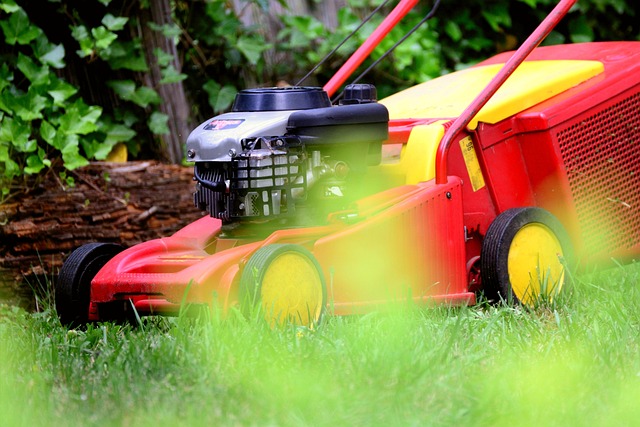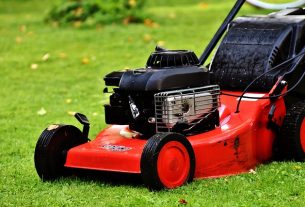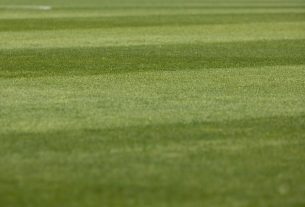Mulching and edging are essential practices in lawn care and landscaping. Mulch improves soil health, retains moisture, prevents weeds, and regulates temperature, while edging defines landscapes, enhances aesthetics, and comes in various tools for different needs. The right materials and equipment, matched to your lawn's requirements, ensure a beautiful, well-maintained outdoor space that saves costs and benefits the environment.
Transform your lawn into a picture of perfection with effective mulching and edging techniques. This comprehensive guide explores the art of lawn care and landscaping, empowering you to achieve a neat and polished look. Discover the numerous benefits of mulching, from improving soil health to suppressing weeds naturally. Learn professional edging techniques to define your lawn’s edges flawlessly. Plus, find expert advice on selecting the right tools for optimal results in lawn care and landscaping.
- Understanding Mulching: Benefits and Best Practices
- Edging Techniques for Neat and Professional Lawn Appearance
- Choosing the Right Mulch and Edger Tools for Optimal Lawn Care
Understanding Mulching: Benefits and Best Practices

Mulching is an essential practice in lawn care and landscaping, offering numerous benefits for your outdoor space. It involves placing organic or inorganic material on top of the soil to enhance its health and appearance. The primary advantage is retaining moisture in the soil, which reduces watering needs, a significant factor in both cost savings and environmental conservation. By blocking sunlight, mulch prevents weed growth, allowing for less competitive vegetation in your lawn. This natural barrier also regulates soil temperature, protecting delicate roots from extreme heat or cold, thus promoting healthier grass.
When implementing mulching practices, it’s crucial to choose the right material and apply it correctly. Organic mulches, such as wood chips or straw, are popular choices due to their ability to improve soil fertility over time. Inorganic options like stones or rubber chips provide a more durable solution but offer fewer nutritional benefits. For best results, maintain a consistent depth of 2-4 inches across the lawn, avoiding direct contact with tree trunks to prevent rot. Regularly replenishing mulch ensures its effectiveness and contributes to a lush, vibrant lawn.
Edging Techniques for Neat and Professional Lawn Appearance

Maintaining a neat and professional lawn appearance requires attention to detail, especially along borders and edges. Edging is a crucial aspect of lawn care and landscaping that can transform an ordinary lawn into a stunning outdoor space. One popular technique involves using manual edgers, which allow for precise control over the cut line, ensuring clean separation between grass and pathways or beds. These tools are ideal for defining flower beds, outlining tree trunks, and creating crisp lines along fences or walls.
For larger properties or those with complex layouts, investing in a string trimmer can be highly effective. This versatile tool can reach tight spots and contours while delivering consistent results. In addition to these manual methods, there are also powered edgers available, offering faster and more extensive coverage. Incorporating edging techniques into your lawn care routine will not only enhance the overall aesthetic but also contribute to a well-maintained and inviting landscape.
Choosing the Right Mulch and Edger Tools for Optimal Lawn Care

Choosing the right mulch and edger tools is essential for optimal lawn care and landscaping. When selecting a mulch, consider its type—organic (like wood chips or straw) or inorganic (such as rock or rubber)—as well as its benefits. Organic mulches enrich the soil with nutrients over time, while inorganic options provide a more durable barrier against weeds. For edging, select tools like string trimmers or edger blades tailored to your lawn’s needs. String trimmers are ideal for tight spaces and tough weeds, whereas edger blades offer precision along sidewalks, driveways, and garden beds.
Match the tools to your lawn’s size and shape, ensuring they are comfortable to use. Comfortable handles and ergonomic designs reduce strain during extended use. Additionally, invest in high-quality equipment that can withstand regular use and varying terrain. Regular maintenance of these tools, including sharp blades and proper fuel/oil mixing, ensures clean cuts and smooth operation, contributing to a neat and well-cared-for lawn.
Mulching and edging are essential components of effective lawn care and landscaping. By understanding the benefits and best practices of mulching, mastering various edging techniques, and selecting the right tools, you can significantly enhance your lawn’s appearance and health. Incorporating these simple yet powerful techniques into your routine will not only keep your grass looking neat and professional but also promote a lush, vibrant landscape that increases your home’s curb appeal.



